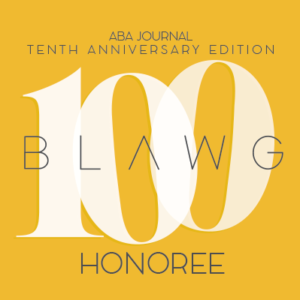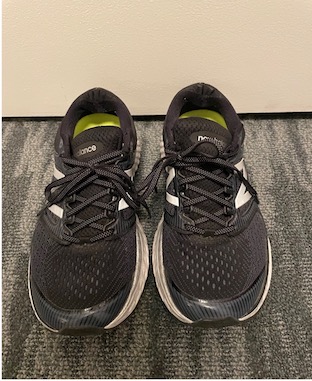If you have been following the price-fixing trials against the chicken industry executives, you know that after failing to convict any of the ten defendants in two previous trials, the Antitrust Division narrowed its case by dismissing five defendants. A reportedly unprecedented third trial against the five remaining defendants ended last Friday when the jury acquitted each defendant. See, Chicken Industry Executives Found Not Guilty of Price Fixing, Bob Van Voris, Bloomberg, July 7, 2022.
After the verdict, the government issued a statement: “Although we are disappointed in the verdict, we will continue to vigorously enforce the antitrust laws, especially when it comes to price-fixing schemes that affect core staples. We will not be deterred from continuing to vigilantly pursue cases to protect the American people and our markets.” This is how it should be. But win or lose, and certainly in this case, the government should reflect on what it did right and what it did wrong. One thing it did very wrong was the failure to engage with any defense counsel in preindictment meetings. None of the individuals indicted received a target letter informing them of the government’s decision to seek their indictment and thus had no opportunity to seek a preindictment meeting. Preindictment meetings provide the staff with the opportunity to listen to defense counsel argue, both factually and/or legally, why the government’s case does not meet the Principles of Federal Prosecution standards for indictment. Also, at the government’s discretion, a preindictment meeting may be an opportunity for the government to put some of its evidence on the table in an attempt to induce a cooperation agreement with the target. The defendants who ended up being put on trial three times before finally being acquitted (as well as the five defendants who the government dropped after the second hung jury), never had this opportunity. The Antitrust Division’s decision to proceed to trial without the benefit of a preindictment meeting was mistake that I hope will not be repeated.
The Antitrust Division’s new policy on preindictment meetings is baffling and a pointless self-inflicted wound. In a July 21, 2021 speech (here), Assistant Attorney General Richard Powers warned that an individual about to be indicted may not receive notice via a target letter if the Division staff believes defense counsel has not been “interested in meaningful good-faith interactions.” While there have always been exceptions to sending a target letter based on the need for secrecy, it has, to my knowledge, never been the Antitrust Division’s policy to not issue a target letter based on what staff attorneys believe to be uncooperative conduct by defense counsel. This is too subjective a standard, improperly punishes an individual or corporation about to be indicted for the ‘sins’ of the defense attorney and is inconsistent with the Antitrust Division’s well-earned reputation for civility and fair play.
The importance of preindictment meetings (generally triggered when defense counsel receives a target letter indicating her client is seriously being considered for indictment), is more important now than ever. The Antitrust Division has taken an expansive view of per se violations, recently bringing its first ever wage-fixing and first ever no-poach cases. The Division has also publicly stated that it is considering bringing criminal Section 2 monopolization cases. Regardless of how the staff feels about a defense lawyer, the Department of Justice owes it to themselves and the taxpayer to listen to defense arguments in a preindictment meeting before committing the substantial resources to a criminal prosecution. Before securing an indictment is the time to listen to an experienced defense counsel (often a distinguished Antitrust Division alum) argue why your case stinks. The prosecutor is not obliged to agree, but a wise prosecutor will listen.
While under no obligation to notify a target prior to indictment, the government typically does so, only refraining in the rare case where, “notification…might jeopardize the investigation because of the likelihood of flight, destruction or fabrication of evidence, endangerment of other witnesses, undue delay or otherwise would be inconsistent with the end of justice.” JM 9-11.153-Notifcation of Targets. In his speech, Mr. Powers laid out a new basis upon which the Antitrust Division may decline to issue a target letter:
“Occasionally, we cannot delay our investigation for targets to be notified, and sometime situations arise where notification creates other risks we cannot bear. Otherwise, the Antitrust Division typically takes a generous approach, particularly when a subject and counsel have engaged productively and affirmatively with staff throughout the investigation. But this process is a two-way street. When a subject and counsel make clear they are not interested in meaningful, good-faith interactions—the kind that enhance the Division’s ability to reach a just result rather than serving as a distraction—the Division’s prosecutors are under no obligation to notify a target of its status. (emphasis added).
As the Justice Manual further provides, ‘[i]n investigations handled by the Antitrust Division, a target’s counsel is usually afforded an opportunity to meet with staff and the office or section chief regarding the recommendation being considered.’ But that is far from absolute. If the target and counsel have declined to engage throughout the investigation, or made apparent to staff that further engagement will not be productive, then the Division will not continue to spend its valuable time and resources on pointless meetings—and if we have decided not to notify the target of its status, of course there will not be an opportunity for a meeting.” (emphasis added).
The Justice Manual does not list “productive and affirmative” engagement by defense counsel with the staff as a prerequisite for issuing a target letter. This subjective standard could be interpreted [or intended?] as an attempt to chill vigorous representation by a defense attorney of her client. Below are a few additional thoughts on why I believe target letters and an opportunity for a preindictment meeting should be afforded to an individual and a corporation, unless doing so would threaten the integrity of the investigation.
Issuing a Target Letter And Affording a Preindictment Meeting Is The Right Thing To Do
1) Sending a target letter and granting a meeting are two different things. Even if the request for a preindictment meeting is denied, the target has been informed that indictment may be imminent. The target letter gives defense counsel an opportunity to prepare the “target” for the imminent negative publicity. Getting indicted is a traumatic event. It is important to remember that it is not the defense counsel who will be indicted–it is an individual or corporation, who at this point, is presumed to be innocent. An individual most likely will have a family who will also be severely impacted by the publicity of the indictment. A corporation will have shareholders and employees. Prior notice of indictment is an act of civility; warranted even if thought to be unearned. Mr. Powers speaks as though the Department of Justice is an ordinary litigant when he says, “But this process is a two-way street.” Prosecutors, especially when bringing criminal cases, are public servants obligated to do the right thing even if miffed at the way an attorney is defending their client.
2) It is in the prosecutor’s self-interest to issue a target letter and grant a meeting with defense counsel if one is requested. A target letter sharpens everyone’s perception of the evidence, and positions can change. Clients’ memories sometimes improve. Clients sometimes even change defense attorneys. New arguments and positions may be advanced. Previously stated defense arguments may sound different at this stage of the investigation. It is to the prosecutors’ advantage to learn what they can in these meetings, before trial, even understanding that defense counsel will likely not be putting all their cards on the table. The Division staff lawyers may sit stone silent in this meeting simply making mental notes of how to counter these facts/arguments at trial. The prosecutor may decide that, even though there is indicatable evidence against a particular target, the chances of winning against more culpable individuals is greater if this person is not indicted. It may be beneficial to drop a prospective defendant from a multi-defendant case and perhaps put that person in the grand jury to help neutralize an expected defense. Or the prosecutor may choose to provide some feedback to a particular defendant which may possibly encourage a pre-indictment plea. And yes, the meeting may be a contentious waste of time. But the target letter and preindictment meeting are dynamic events with unpredictable outcomes. That one of those outcomes may be, or even is likely to be, a waste of time, is not sufficient reason to preclude all other possibilities.
3) Humility should also compel a prosecutor to sit through a “don’t indict my client” pitch meeting. Indicting an individual or a corporation is a tremendous responsibility and while every Antitrust Division prosecutor I have ever known has tried their best to make the right decision, no one is infallible. Antitrust cases are unique and complex—that is why there is an Antitrust Division enforcing the Sherman Act and not the US Attorney’s office. No prosecutor is so experienced and foresighted that he can’t learn something by listening to experienced defense counsel pitch the weaknesses in a case against their client. A boring or even contentious pitch meeting is the price to pay to take every measure to ensure that the momentous decision to indict is the correct one and is in the interests of justice.
“There is a principle which is a bar against all information, which is proof against all arguments, and which cannot fail to keep a man in everlasting ignorance – that principle is contempt prior to investigation.” William Paley [sometimes attributed to Hebert Spencer]. If the prosecution refuses to have a preindictment meeting, they will never know whether they would get what’s behind Door #1 (a waste of time) or Door #2 (a useful preview of some of the weaknesses in the case and/or strengths of the defense) or Door # 3 (a target with whom you share information who ultimately becomes a cooperating witness).
Conclusion
There is no dispute that target letters and preindictment meetings are not a matter of right. The perceived cooperation of defense counsel, however, should not be the basis for declining to give notice of indictment. Granting a pre-indictment meeting is a separate question, but one that should also be answered in the affirmative absent a legitimate need for secrecy. It is not only in the interest of the particular case in question, but in the long-term interest of the Antitrust Division to maintain its reputation as an institution that conducts itself with the highest level of fairness, decency and civility.
Thanks for reading. Bob Connolly [email protected]
This post is an expanded/revised version of a Cartel Capers post of July 27, 2021, Why I think the Antitrust Division Should Reconsider Its Policy on No Notice/No Target Letter Indictments

